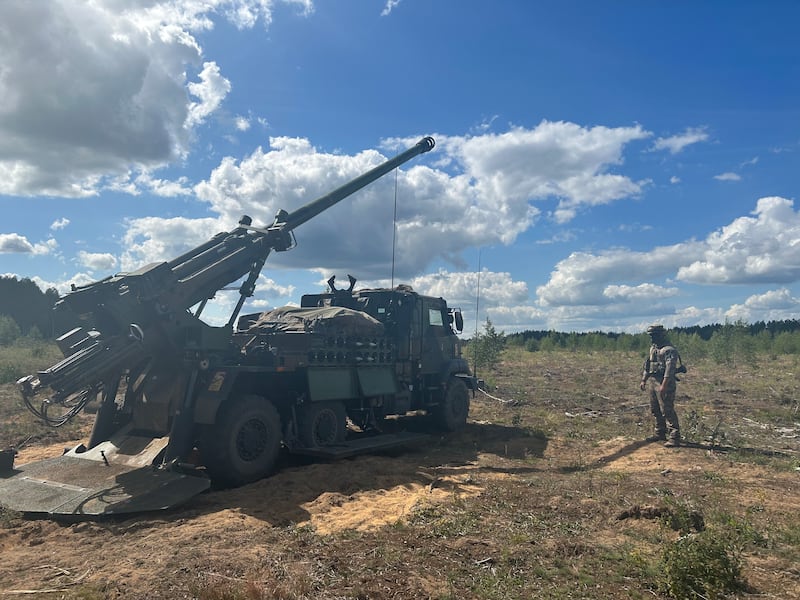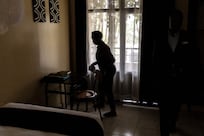On a hot, sunny day in a densely wooded area of eastern Lithuania, Maj Mantas Ragulis points with a wooden stick at a map drawn on the sandy ground.
Dozens of US, French and Lithuanian soldiers and diplomats watch him as he describes how self-propelled howitzers from the three countries are going to converge.
Right after a two-day Nato summit in the capital Vilnius, the tight choreography is part of a week-long military exercise to demonstrate the three countries’ military prowess and interoperability.
“This is the forest,” said Maj Ragulis, pointing at pieces of coloured paper on the map.
“Our two battalions have stopped the enemy, and its defence position is two kilometres away from here.”
Maj Ragulis, his face covered with green and brown paint, checks his watch.
At exactly 5pm, bangs pierce the air, followed by a cloud of dust in the distance.
Four French Caesar cannons fire first, followed by US M109 Paladins and Lithuania’s Panzerhaubitze 2000s. For the last round, they all fire together at the same target. There is a smattering of applause.
Gen Francois Goguenheim, who leads France’s ground forces in continental Europe, drops his binoculars as he turns to French ambassador to Lithuania Alix Everard.
“For maximum impact, all cannons need to arrive at the same time,” he said.
“We can also fire one cannon above a 45-degree angle and another below that angle. One system can fire two canons that land at the same time. It’s all about the maths.”
For Lithuania’s chief of defence Valdemaras Rupsys, the exercise enabled his soldiers to become acquainted with new equipment and procedures.
‘We are strong and our enemy knows it,’ he said.
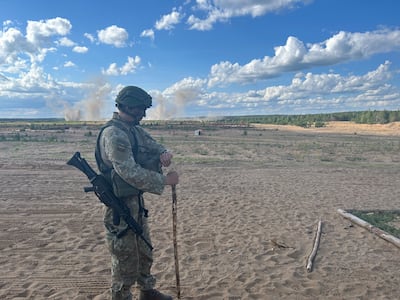
'On the front line'
Projecting strength is part of Nato’s strategy called deterrence, the equivalent of preparing for war to avoid one.
Russia’s invasion of Ukraine last year triggered fears that Moscow might attack other Eastern European countries.
Nato has strengthened its military presence in the region by establishing multinational battlegroups in eight countries: Bulgaria, Estonia, Hungary, Latvia, Lithuania, Poland, Romania and Slovakia.
“The objective is to prevent your adversary from undertaking an action that they otherwise might contemplate,” said Rafael Loss, co-ordinator of pan-European data projects at the European Council on Foreign Relations think tank.
Economic deterrence – warnings of sanctions issued by French and German leaders – failed to stop Russia from invading Ukraine last year.
But Russian President Vladimir Putin has not attacked a Nato country.
“Nato is more serious at any point since the 1990s about a combat ready military defence and deterrence posture,” said Mr Loss.
One reason Baltic countries, which are all Nato members, have been chosen to project deterrence is their perceived vulnerability to a Russian attack.
Local politicians have recently expressed fears of infiltration of Wagner mercenaries through Belarus after a failed mutiny against Moscow.
The border with Belarus is nine kilometres from Pabrade military base, where the joint exercise took place on Thursday.
The Russian enclave of Kaliningrad lies 300 km east of Pabrade.
“We are on the front line,” said Ms Everard, standing by one of the Caesar cannons minutes after it fired.
“It’s very important to be present and on the ground.”
Lithuania’s army recently bought 18 French Caesar howitzers for delivery at the latest in 2027.
“It helps when our minister of defence saw the Caesars working in Ukraine. They are very successful,” Maj Ragulis told The National.
He expected Lithuanian soldiers to learn how to operate the gun in France in a matter of months.
Their deployment on the battlefield in Ukraine has, it appears, irked Mr Putin.
He said on Thursday that foreign-made tanks would be a “priority target”.
The Caesar, with its 40km range and ability to move from its shooting position in less than two minutes to avoid enemy fire, was described by Gen Gogenheim as “one of the best pieces of artillery in its domain”.
Its purchase is part of the Lithuanian army’s objective to rapidly modernise, particularly since Russia’s 2014 invasion of Crimea.
French, US and Lithuanian armies take part in week-long training exercise
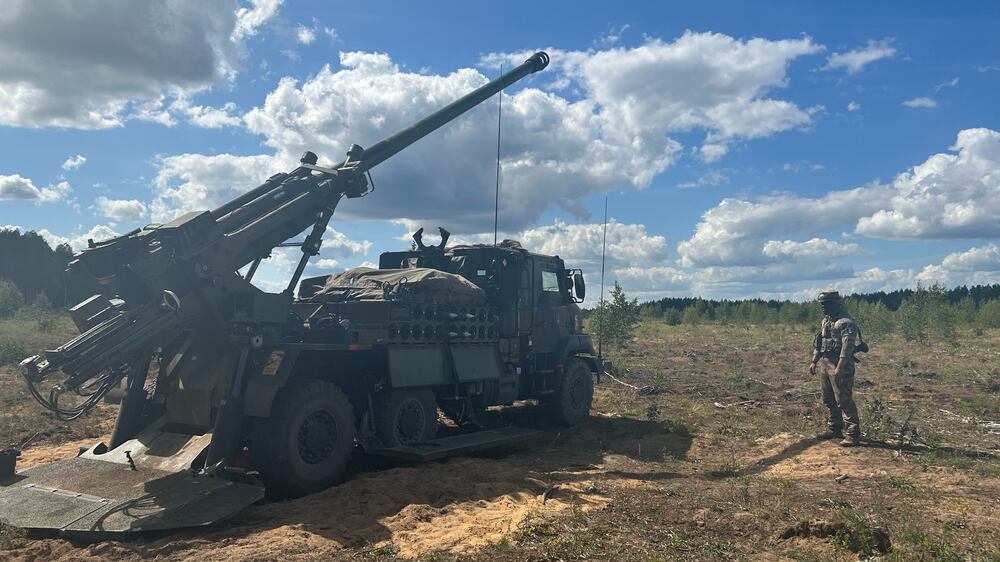
Lithuania, a country of 2.8 million people, is in parallel expanding its infrastructure to host more foreign troops.
Germany is expected to garrison a brigade of 4,000 in Lithuania on a permanent basis. So far, western troops are deployed for six months at a time.
At a summit in Madrid last year, Nato announced an increase of the number of troops on high alert from 40,000 to 300,000.
Exactly how many are ready to be deployed in a matter of hours is classified information.
But “public knowledge is that we’re not there yet,” said Mr Loss.
The soldiers say they are prepared.
“The only thing we can do is train, train, train to get better and better,” said Norwegian Maj Baard Thodese.
He is the commander of a Norwegian force of 150 men in Lithuania under the leadership of a multinational German-led battalion in Rukla, 200 km east of Pabrade.
The battlegroup comprises 1,400 soldiers who are also from the Netherlands, Croatia, the Czech Republic, Belgium and Luxembourg.
‘That’s the only thing we can do to be as ready as we can,’ he told The National.
Roads between Pabrade and Rukla are packed with military vehicle. There is a peak in traffic when around redeployment time.
The Norwegian contingent is leaving at the end of the month and is busy packing, counting and cleaning their equipment, including disinfecting their infantry fighting vehicles before they are shipped back to Norway.
The overall experience for his soldiers has been one of experience sharing and camaraderie, they said.
‘It was really fun to work for a few nights with some Dutch guys, to see how they work and compare it with how we work, and put it all together to work as one team,” said Magnus, who is 24.
“We’ll miss this place,” said his colleague Frederik, 20.
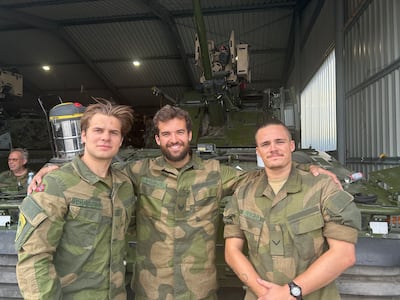
Aligning expectations
Military exercises are also an opportunity for the hundreds of soldiers from western nations in Lithuania to learn from each other.
Although they all follow Nato guidelines, they also have their own preferences when it comes to vehicles they operate and different standards that guide, for example, the width of their train tracks.
“They might understand things differently or have different expectations about how each of them approaches operational problems,” said Mr Loss.
“So aligning these expectations is part of exercising.”
French Lt Col Thomas Miailhes said he became aware of this when he oversaw the transport of the four Caesar howitzers from France to Estonia and then Lithuania by train.
“Even though you might know these details on paper, it’s different when you have to implement them in real life,” he said.
“Behind the cannon, there’s more vehicles with shells, material, and soldiers to think about too,” said Lt Col Miailhes.
Such realisations is part of how allies strengthen their interoperability and readiness – both key Nato goals.
“This kind of exchange, training and exercise with partners is what allows us to be ready,” said Lt Col Miailhes.
He is the deputy commander of Brig Giles Harris, who heads the UK-led multinational force deployed in Estonia as part of Nato’s enhanced Baltic presence.
The four howitzers were sent for close to three months at Estonia’s Tapa army base, which lies 250 km West of Russia’s second-largest city, St Petersburg.
For Norwegian troops in Rukla, lessons learnt include evaluating strengths and weaknesses.
A key strength is the lightness and mobility of Norway's reconnaissance company, which includes dozens – their exact number remains confidential – of six-wheeler all-terrain vehicles covered with green camouflage nets.
Other nations favour heavier cars, said the company’s Executive Officer Ludwig Blaustad.
‘This is something that is unique to the Norwegian reconnaissance company in the multinational battlegroup,’ according to XO Blaustad.
Lithuania also has a flatter terrain than Norway, meaning Norwegian soldiers have to operate in a more compact way than they are used to.
“We can’t stretch our units as much,” said XO Blaustad.
On the ground, affinities develop between soldiers from different countries. Norwegian soldiers in Rukla worked with Belgian intelligence officer Lt Lars Weyne.
“Each country has its interpretation to some degree of the Nato standard doctrine,” said Lt Weyne.
“For some countries, it’s harder to adapt. Norway, Belgium and also the Netherlands for example are really into the Nato doctrine, so it’s easier for us to integrate together, and harder with others.
“But we still get there – it just takes a little longer.”
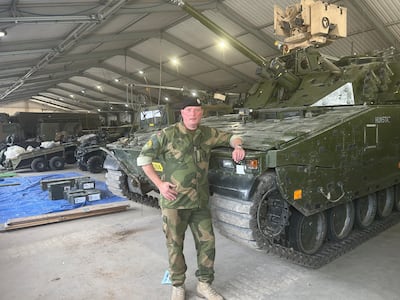
Similar experiences are replicated all along the eastern flank where Nato is deployed, from Poland to Romania.
They play a part in the recent cultural shift in Europe towards accepting that war with Russia is an increasing possibility.
In 2015, German soldiers took part in a Nato military exercise using broomsticks to hide the lack of heavy machine guns.
The return of large-scale combat on the European continent was viewed at the time as “completely unrealistic”, said Mr Loss.
Germany’s widely criticised defence minister at the time, EU Commission chief Ursula von der Leyen, may possibly replace Nato’s long-serving Secretary General Jens Stoltenberg next year.
At the Vilnius summit, Nato decided that its two per cent of GDP spending on defence target would become a floor, not a ceiling as it had been decided in 2014.
Only 11 countries reach or exceed that figure. At 1.57 per cent according to the alliance, Germany remains under the spending target. Lithuania is at 2.54 per cent.
There is still a lot of work to be done.
Germany uses easy-to-intercept analogue communications systems instead of digital ones.
A large part of the $100 billion fund announced last year by German Chancellor Olaf Scholz is toward upgrading communications equipment.
In parallel, Russia is also investing in military equipment.
It spent 2 trillion roubles, or $26 billion, on defence in January and February alone, a 282 per cent jump on the same period a year ago
“Some intelligence officers say that Russia only needs three to five years to get back to full strength after the war in Ukraine stops,” said Mr Loss.
“Nato wants to be ready before Russia is ready.”
